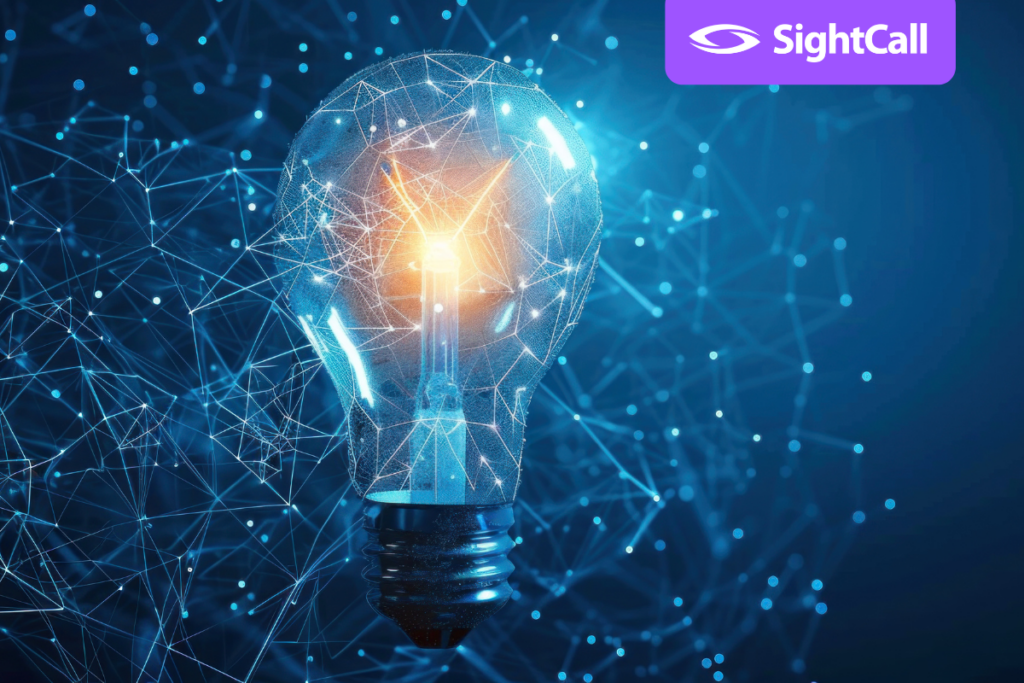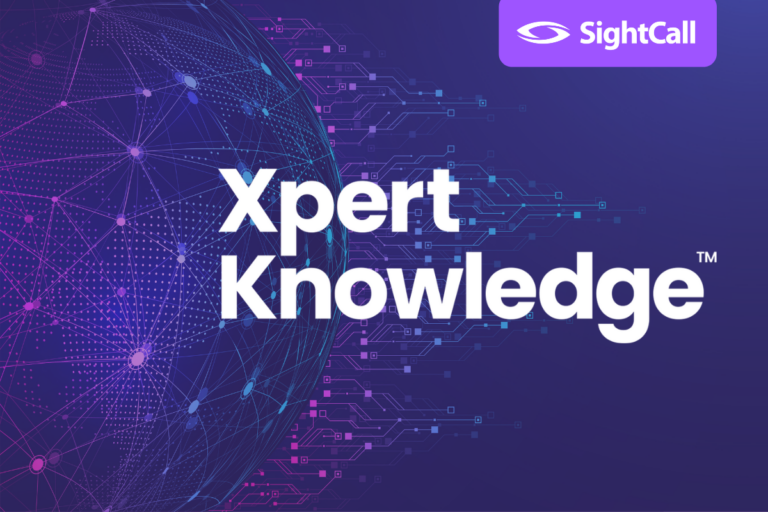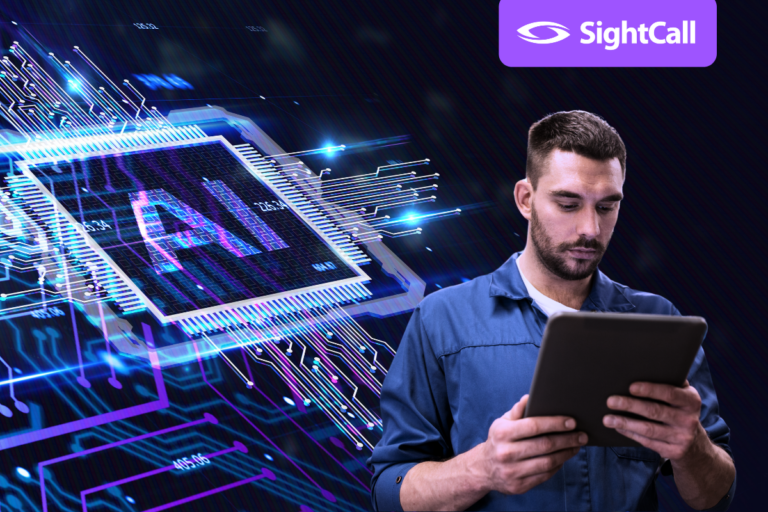During a recent industry event in Amsterdam, field service leaders from around the world convened to share pressing challenges and innovative solutions.
At the heart of the discussion? Knowledge capture: the art and science of preserving field expertise before it walks out the door.
SightCall’s Chief Operating Officer Ronan Souberbielle and Hans Göttlinger, VP of Sales for DACH, UK and the Nordics, were there. We caught up with them for their takes on the topics and trends that were front and center.
As Ronan put it: “There’s a huge sense of urgency on knowledge capture. Everyone was asking how technology—especially AI—can augment service delivery.”
The Knowledge Crisis Is Now
The field service industry is on the edge of a generational cliff.
While much has been said about the Silver Tsunami, the reality is broader: nearly 45% of field service engineers say they don’t plan to stay in the profession long-term or aren’t sure if they will.
Even more concerning, only 28% of those planning to leave cite retirement as the reason. The other 72% are walking away due to burnout, unclear career paths, or disengagement.
“It’s five minutes to 12,” Hans said. “People are leaving every month. The retirement rates are already high. And I don’t think there is one solution in place yet to capture all this knowledge in a structured way.”

Moving from Tribal to Transferable Knowledge
Historically, field service expertise lived in the heads of veterans—passed down informally through ride-alongs and word of mouth. But today, when 52% of a technician’s time is consumed by paperwork and searching for information, there’s no time to rely on tribal wisdom.
In a world driven by speed, scale, and digital-first experiences, this model is no longer sustainable.
Hans highlighted the problem: “A lot of their knowledge is captured in people’s heads rather than in digital platforms… Once these people retire, they take all the knowledge and it’s gone.”
But even when organizations try to digitize knowledge, it’s not always usable. Raw notes, PDFs, and videos need context, editing, and structure to be truly valuable in the field.
“You can’t just take the raw formats,” Hans said. “It has to be redacted. And how do you get raw information from field service engineers? Probably by watching them work.”
This points to a future where knowledge capture is observational and interactive—powered by smart video, AI, and automation.
Observational Learning: The New Gold Standard
One standout insight from the event was that real expertise isn’t written—it’s demonstrated. The best knowledge often lives in technician muscle memory, gestures, and in-the-moment decision-making processes.
“Service people are great at their job but terrible at writing things down,” Hans said. “You won’t get them to document knowledge that way. So we need to find other ways—like observation and AI-based structuring.”
That means capturing live video and turning it into how-to guidance or training materials.
“The best way to get knowledge might be by watching field service engineers work,” Hans added. “But that’s a big, big problem for organizations.”
Observational learning represents a shift away from traditional documentation and toward immersive, real-time capture. With the help of tools like augmented reality (AR), video support, and digital twins, organizations can now observe and codify technician actions in context.
This approach not only captures what technicians know—it reveals how they think. That kind of tacit knowledge is invaluable for onboarding new technicians and building intelligent support systems.
But the infrastructure to support this must evolve. As Hans put it: “There’s no structured way to do this yet. That’s the problem. And it’s urgent.”
AI and the Rise of Self-Service Knowledge
Self-service expectations are rising fast—especially among younger customers and employees. Hans noted that one panelist joked:
“My generation fears three things: clowns, auditors, and people who call us.”
The takeaway? Gen Z expects to solve problems on their own—without phone calls or escalations. But to deliver that, companies need a foundation of practical, actionable intelligence.
Ronan explained: “To feed that kind of powerful self-service capability, you need knowledge. Today, that knowledge is not documented. That’s why everyone is betting on AI to bridge the gap.”
This aligns with recent findings showing that search-based self-service and computer-assisted troubleshooting are underutilized, yet key differentiators in customer experience.
“AI was the center of everything,” said Ronan. “The ability to capture all that knowledge from field service teams and share it—towards self-service activity or to train new joiners—that’s where they want to go.”
The drivers are clear. Customers want faster resolution and better self-service options. They’re used to seamless digital experiences and expect the same when their equipment needs fixing.
“Customers want things to be solved as soon as possible,” Ronan added.
Organizations that leverage AI to deliver this experience—by converting technician insights into predictive guidance, smart troubleshooting, and training tools—are setting the bar.

Business Impact: Service as a Differentiator
This isn’t just about knowledge preservation—it’s a strategic move. With equipment downtime costing as much as $10,000 per hour in industries like manufacturing and medical devices, the ability to solve problems faster is a competitive advantage.
Ronan said: “Service is now the key differentiator. It’s very hard to differentiate on the product. But delivering exceptional service—that’s how companies stand out.”
Shifting left (moving support closer to the customer via self-service or remote support) doesn’t just reduce cost—it improves customer experience, speeds time to resolution, and supports sustainability goals by reducing travel.
Make Knowledge Work Harder
Field service leaders must treat knowledge like the strategic asset it is.
Capturing it is no longer a nice-to-have—it’s business-critical. Whether through AI, video, or immersive tools, the focus must be on making expertise accessible, consumable, and impactful across every tier of the service organization.
The future belongs to companies that:
- Capture real-world expertise—automatically
- Leverage AI to structure and surface knowledge
- Empower customers and new technicians through intuitive, visual self-service
- Treat knowledge as a strategic asset, not a byproduct
As Hans warned: “If you don’t act now, you’ll lose the knowledge—and with it, the ability to compete.”




